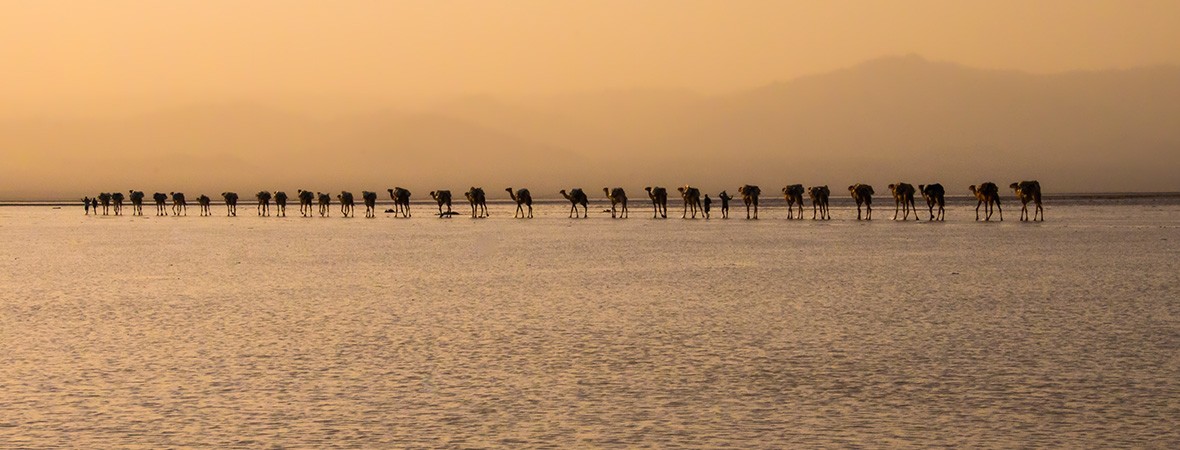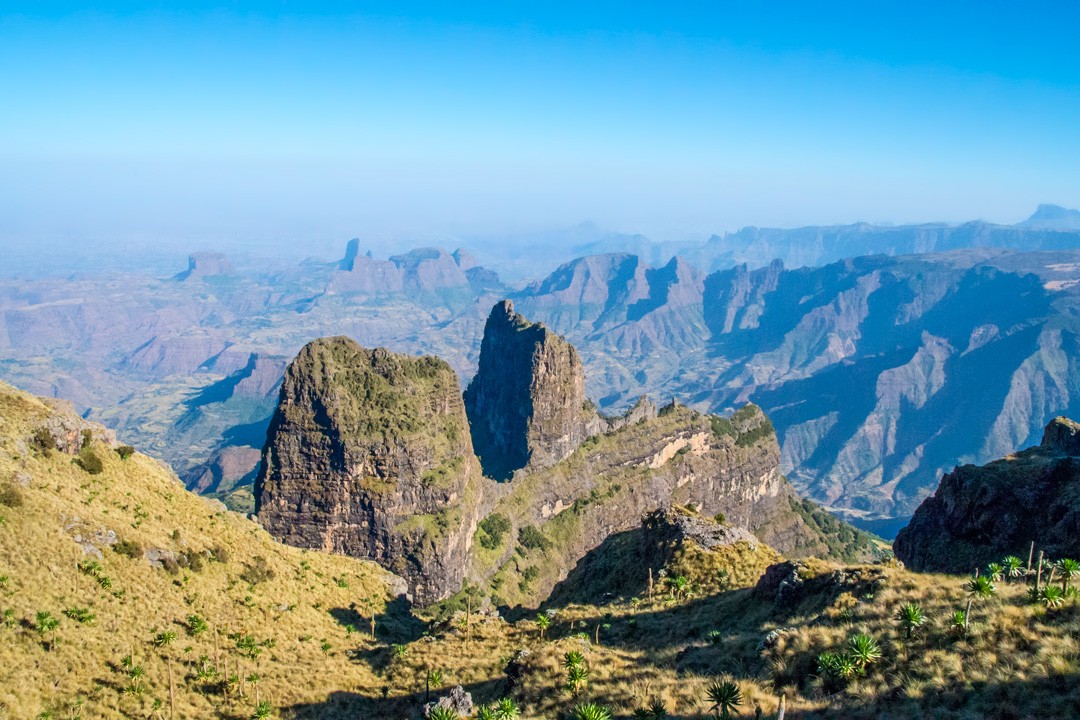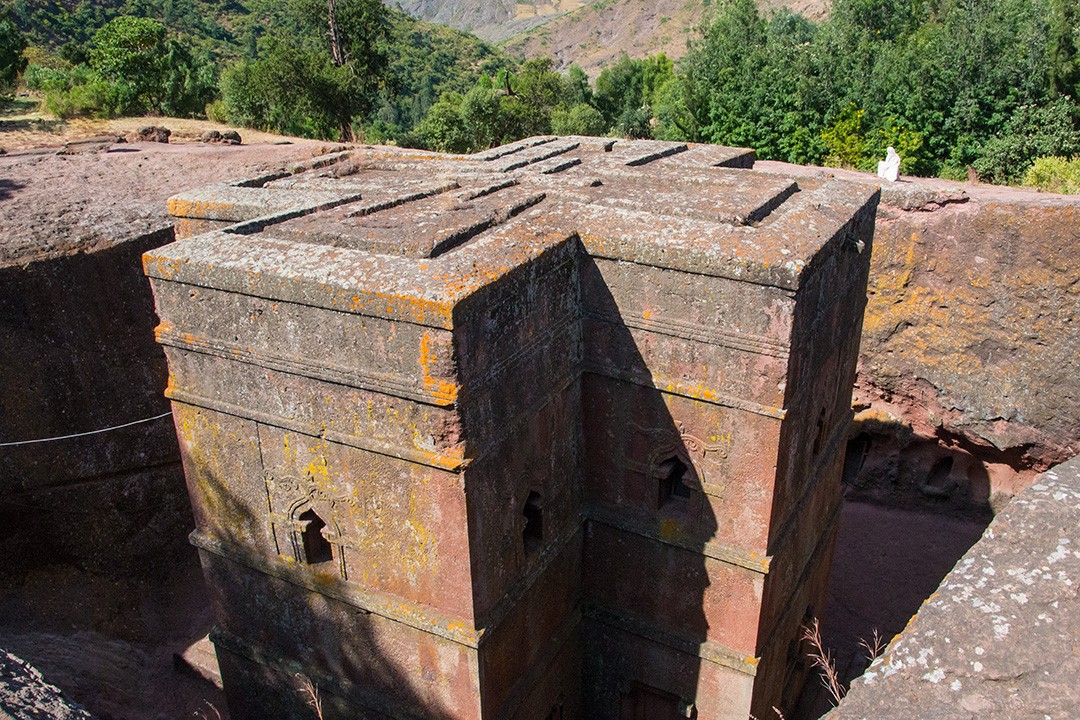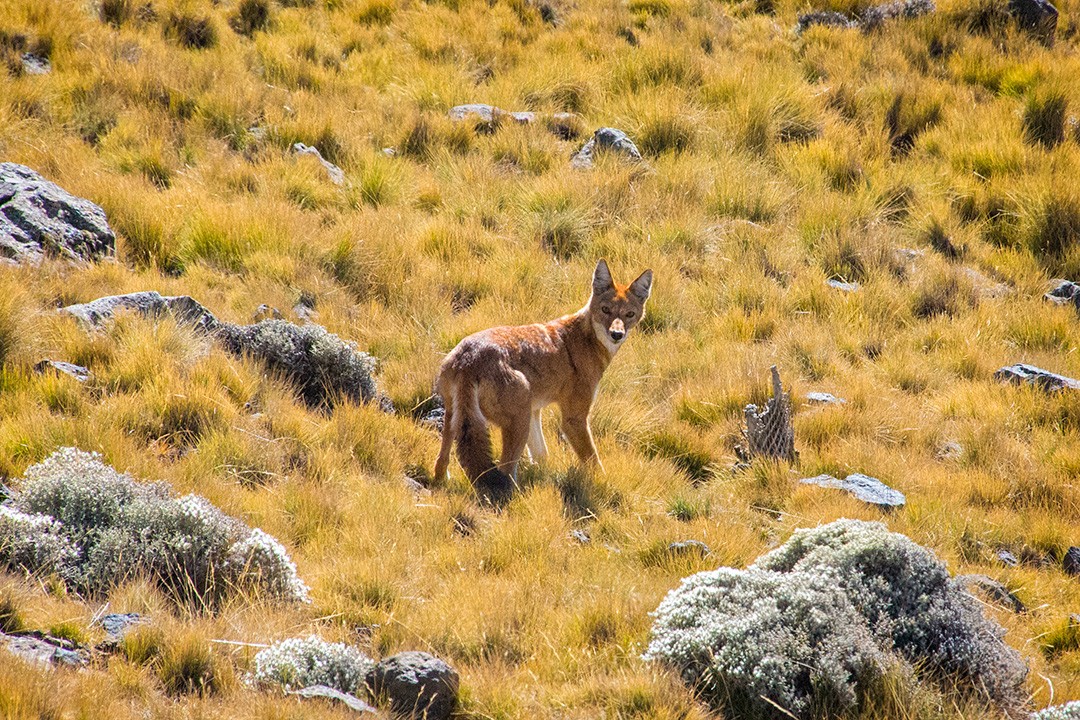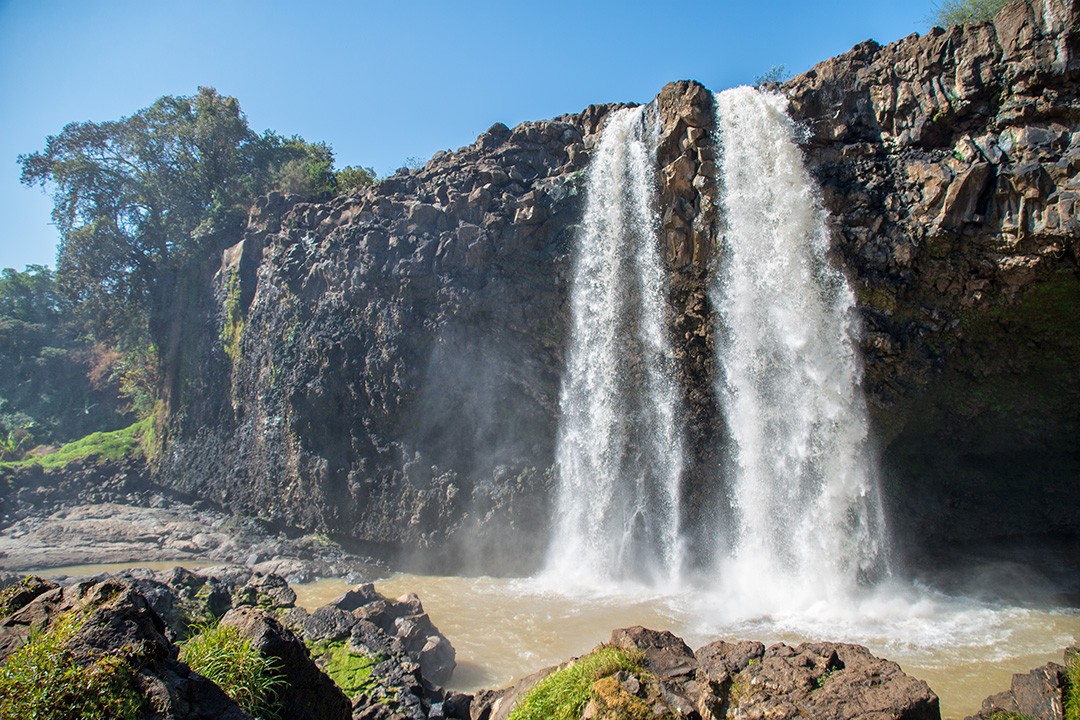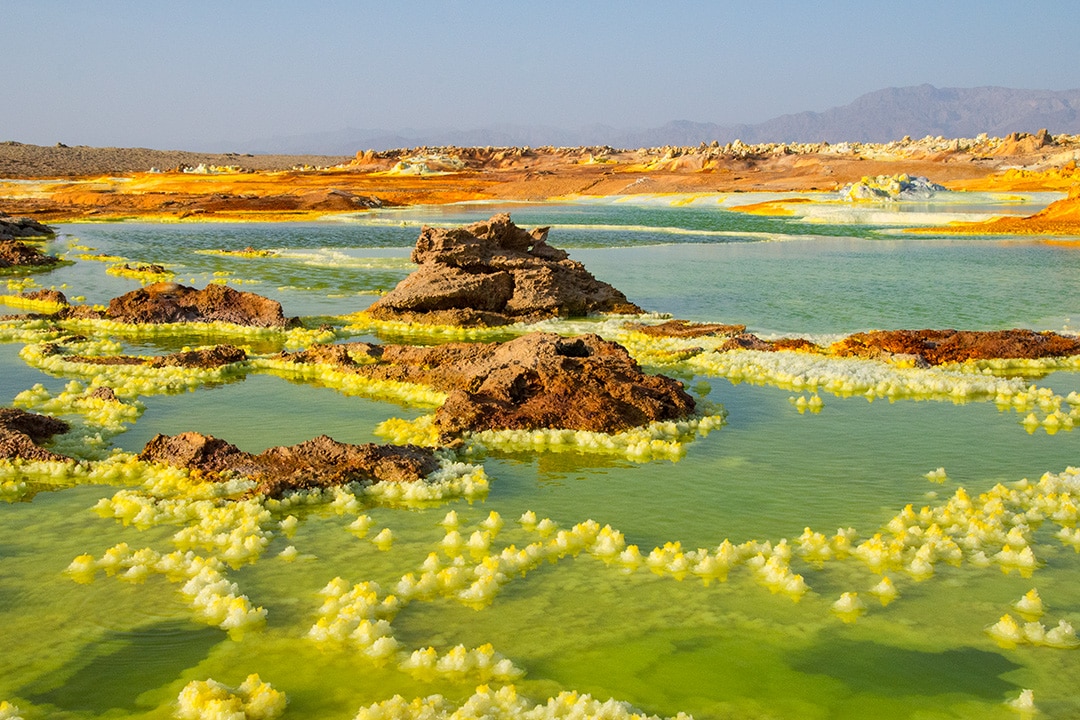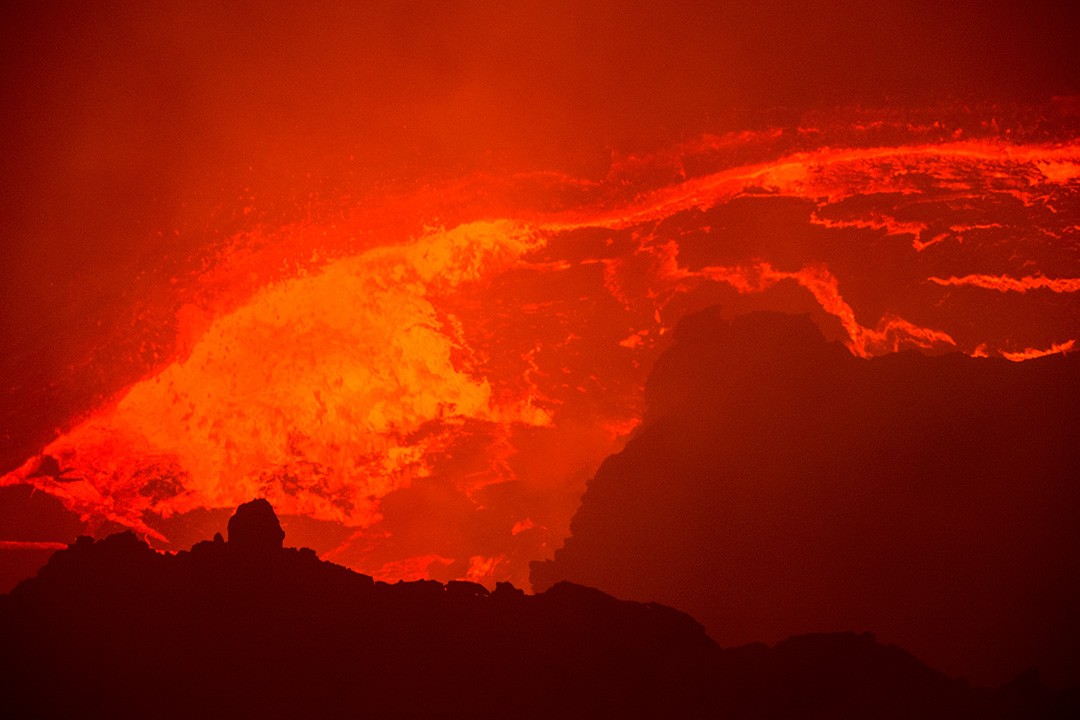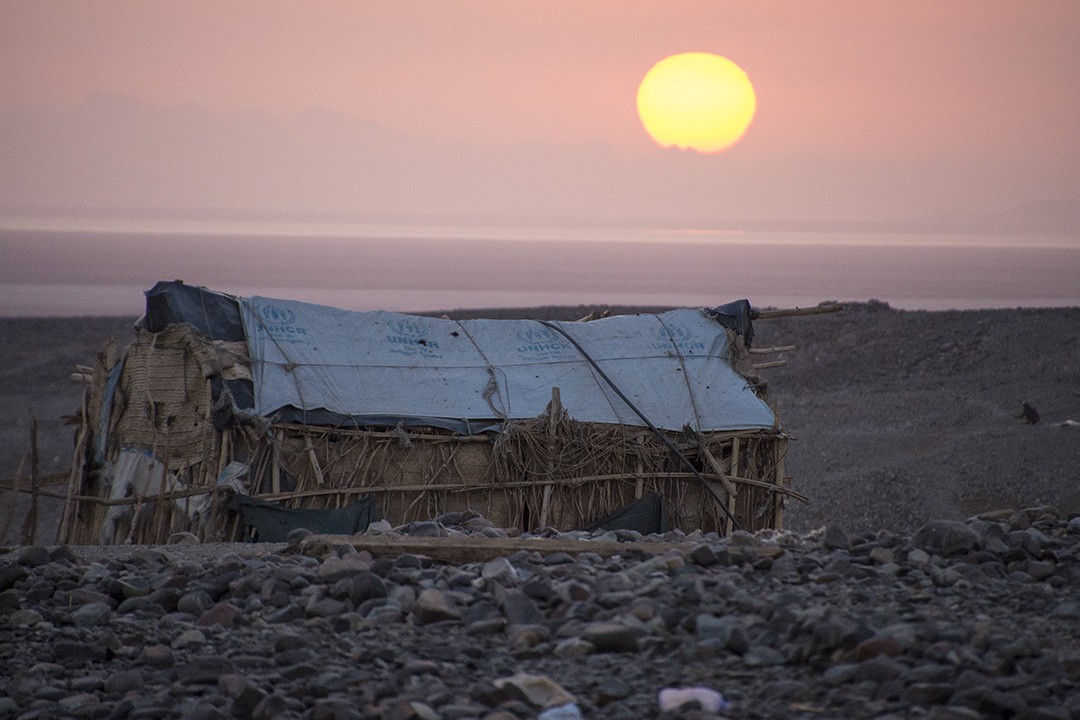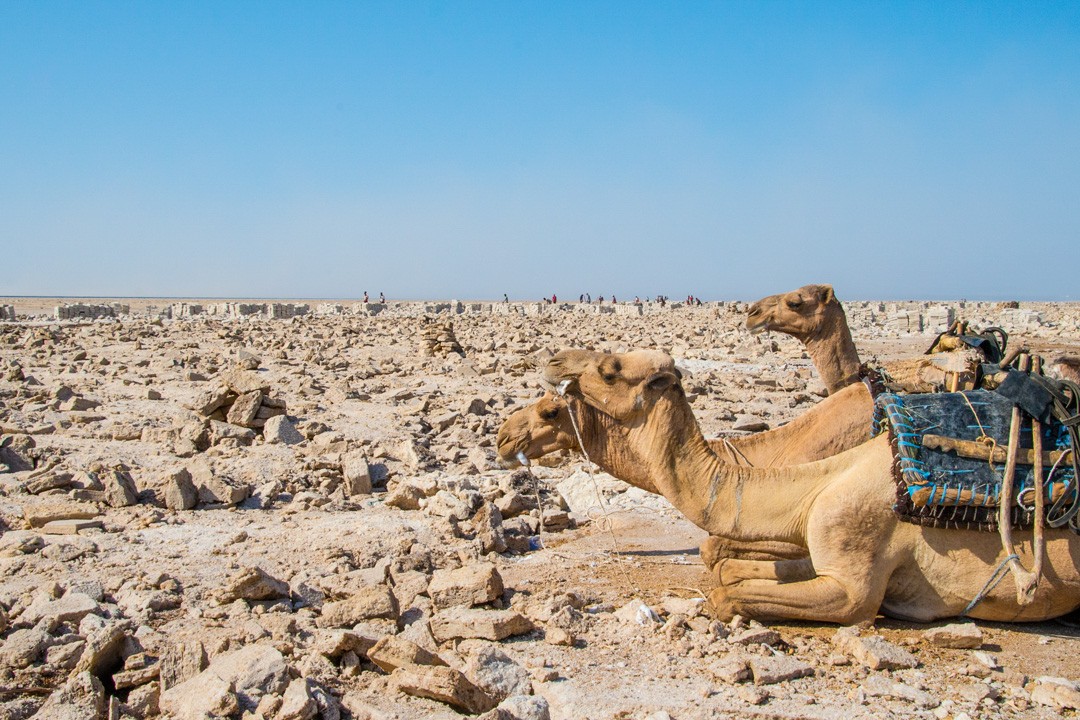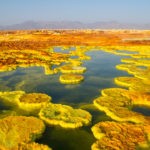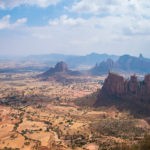From violent volcanoes to luminous lakes, we take a look at the most interesting facts about Ethiopia
Ethiopia’s unique mix of fascinating history, deep-rooted identity, incredible natural wonders and rare wildlife makes its one of the most intriguing places on Earth.
The country is home to landscapes as diverse as deserts, volcanoes and highlands, architecture ranging from rock-hewn churches to medieval-style castles, and wildlife that includes rare species such as the gelada baboon, the walia ibex and the Ethiopian wolf.
We spent a month exploring the enthralling ‘land of origins’ and learnt many interesting facts about Ethiopia along the way. Here, we share the best of them.
Interesting facts about Ethiopia
1. Ethiopia had two sites on UNESCO’s original list of 12 World Heritage Sites in 1978: the rock-hewn churches of Lalibela and Simien Mountains National Park. It now has nine in total.
(Source: UNESCO)
2. First founded in 980BC, Ethiopia is Africa’s oldest independent country.
(Source: BBC)
3. Ethiopia is the second most-populous country in Africa, with a population of over 106 million, growing by 10% a year. It is second to Nigeria’s population of over 193 million.
(Source: CNN)
4. The rock-hewn churches of Lalibela were not constructed from the ground up, but chiselled out of volcanic rock instead. Legend has it that the thousands of labourers who toiled on Lalibela’s “New Jerusalem” by day were replaced by angels who continued the work by night.
(Source: CNN)
5. Ethiopians believe that the Ark of the Covenant, the legendary relic said to hold the 10 Commandments, is housed in a church in Ethiopia. Only one specially chosen guardian has access to the Ark, and even he is not allowed to look at it to confirm it’s actually there. Handy that.
(Source: Lonely Planet)
6. Ethiopia’s capital city, Addis Ababa, is the highest capital city in Africa at 2,355m (7,726ft) above sea level.
(Source: The Guardian)
7. Ethiopia is home to the world’s rarest canid and Africa’s most threatened carnivore: the Ethiopian wolf. Fewer than 500 remain in the wild.
(Source: BBC)
8. Ethiopia is the only country in Africa that was never formally colonised, although Italy twice occupied it: from 1895-96 and 1935-1941.
(Source: BBC)
9. Rastafarianism, developed in Jamaica in the 1930s, uses former Ethiopian emperor Haile Selassie as its spiritual leader. Although Selassie (known as Jah to Rastas) died in 1975, his death is not accepted and many believe he will one day return.
(Source: Telegraph)
10. Ethiopia is home to Lake Tana which feeds into the Blue Nile, one of the two major tributaries of the River Nile, the longest river in the world.
(Source: Britannica)
11. Ethiopia is the only country to use a time system with a 12-hour clock counting from dawn to dusk, and from dusk to dawn. Thus 7:00AM in Ethiopia corresponds to 1:00 in daylight hours in local Ethiopian time. Midday is 6:00. This led to much confusion during our trip to Ethiopia – and to be honest, we’re still a bit baffled by it all.
(Source: Public Radio International)
12. Lucy, the remains of the oldest fossilised human skeleton, was discovered in Ethiopia in 1974. She lived 3.2 million years ago and was celebrated in a Google Doodle in 2015.
(Source: Independent)
13. Dallol in the Danakil Depression in Ethiopia still holds the official record for the highest average temperature for an inhabited location on Earth. Recorded between 1960 and 1966, the average annual temperature was 35°C (95°F).
(Source: Telegraph)
14. Erta Ale volcano in Ethiopia holds the record for the longest-existing lava lake, present since 1906. Erta Ale, which means “smoking mountain” in the local Afar language is also one of the most active volcanoes in the world.
(Source: BBC)
15. The Ethiopian Calendar has 13 months and is over seven years behind the Gregorian calendar. As such, Ethiopia celebrated the new millennium on 11th September 2007. This is because the Ethiopians did not change their calendar when the Roman church amended its ancient calendar in 525AD.
(Source: The Guardian)
16. The Danakil Depression of the Afar region in Ethiopia lies at the convergence of three tectonic plates that are slowly being pulled apart. As the earth separates and thins, the land sinks.
(Source: New York Times)
17. One of the more tragic facts about Ethiopia is that the country suffered from horrific famines in 1973 and 1984, when hundreds of thousands of people starved to death. The country still regularly suffers from droughts caused by poor infrastructure, political instability and an extremely dry climate.
(Source: Washington Post)
18. By 2017, Ethiopia had the fastest-growing economy in the world. It’s GDP grew by 8.3% in 2017 compared with a global rate of 2.7%.
(Source: World Economic Forum)
19. Despite its growth, Ethiopia is still very poor with around a third (33.5%) of its population living in poverty in 2011.
(Source: World Bank)
20. Ethiopia fought a bloody and brutal 16-year civil war from 1974-91. After the war, thousands of people had died during what was known as the “Red Terror”.
(Source: BBC)
21. In 1960, Ethiopian Abebe Bikila became the first black African to win an Olympic gold medal. He won the marathon in Rome barefoot after his only pair of running shoes were ruined and his replacements gave him blisters.
(Source: The Guardian)
22. For centuries, Ethiopians have mined the salt deposits in the Afar region. Today, workers cut slabs of salt and pack them onto camels and donkeys where they are transported across the desert to be sold at markets.
(Source: National Geographic)
Lonely Planet Ethiopia is a comprehensive guide to the country, ideal for those who want to both explore the top sights and take the road less travelled. If you prefer to travel in a tour, we recommend G Adventures and their small group Ethiopia tours.
